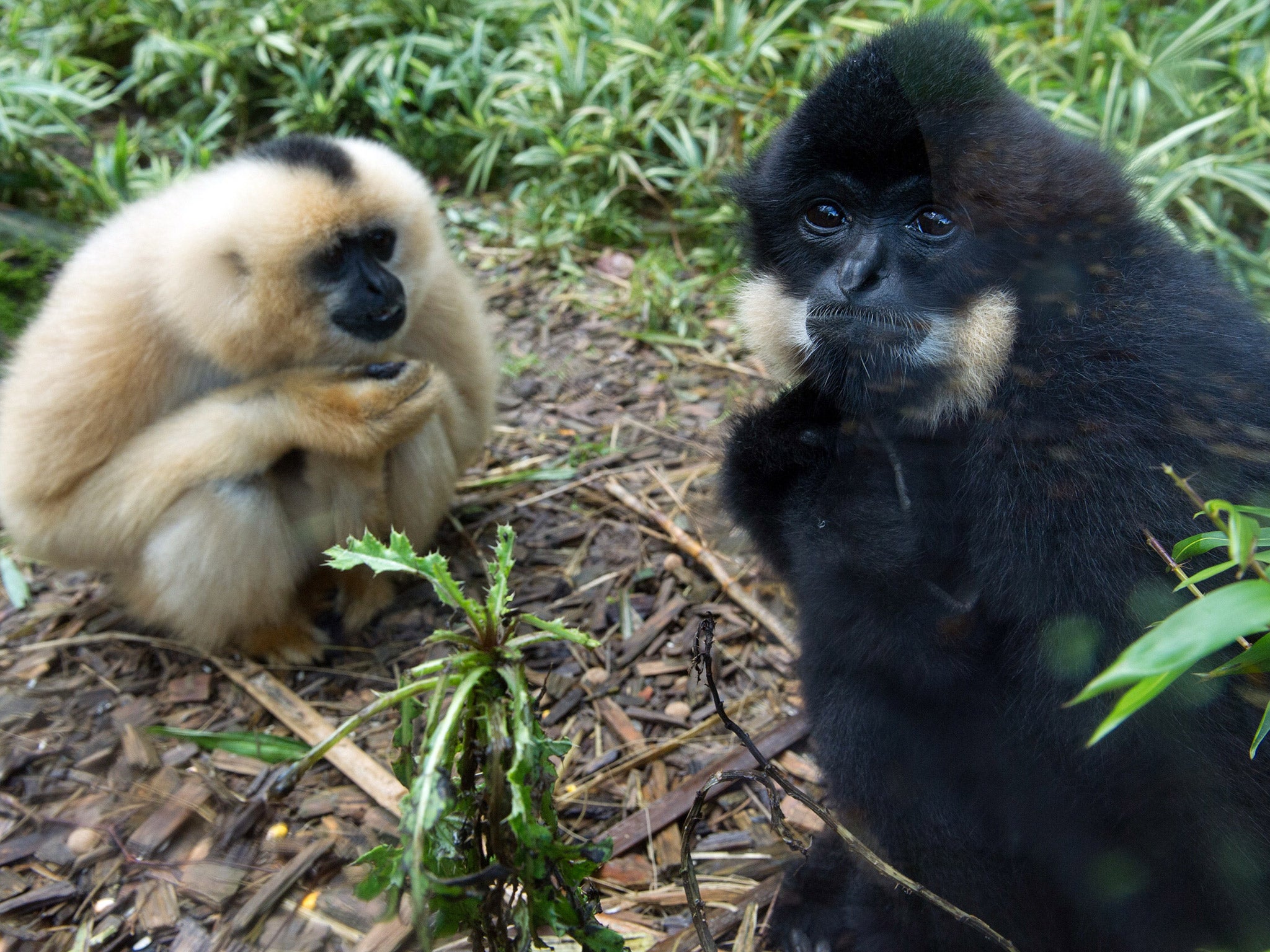Scientists decipher the secrets of gibbon 'speech'
The research is so significant that it could provide clues on the evolution of human speech

Your support helps us to tell the story
From reproductive rights to climate change to Big Tech, The Independent is on the ground when the story is developing. Whether it's investigating the financials of Elon Musk's pro-Trump PAC or producing our latest documentary, 'The A Word', which shines a light on the American women fighting for reproductive rights, we know how important it is to parse out the facts from the messaging.
At such a critical moment in US history, we need reporters on the ground. Your donation allows us to keep sending journalists to speak to both sides of the story.
The Independent is trusted by Americans across the entire political spectrum. And unlike many other quality news outlets, we choose not to lock Americans out of our reporting and analysis with paywalls. We believe quality journalism should be available to everyone, paid for by those who can afford it.
Your support makes all the difference.Scientists have deciphered the secrets of gibbon “speech” – discovering that the apes are sophisticated communicators using separate and distinct whispers to talk to their companions.
The research is so significant that it could provide clues on the evolution of human speech and also suggests that other animal species could speak a more precise language than has been previously thought, according to lead author Dr Esther Clarke of Durham University.
Her study found that gibbons produce different categories of “hoo” calls – relatively quiet sounds that are distinct from their more melodic “song” calls.
These categories of call allow the animals to distinguish when their fellow gibbons are foraging for food, alerting them to distant noises or warning others about the presence of predators.
In addition, Dr Clarke found that each category of “hoo” call can be broken down further, allowing gibbons to be even more specific in their communication.
A warning about lurking raptor birds, for example, sounds different to one about pythons or clouded leopards – being pitched at a particularly low frequency to ensure it is too deep for the birds of prey to hear. The warning call denoting the presence of tigers and leopards is the same because they belong to the same class of big cats, the research found.
Dr Clarke says that she set out to analyse the loud and conspicuous songs that gibbons are mainly known for. But sitting in the forests of north-east Thailand she began to notice distinct variations – and patterns – in the way that the quieter calls were being used.
“It’s amazing. I went out to study the song but I started to see other patterns and started to analyse them. The hoo made when a raptor approached was noticeably more nasally than the others,” said Dr Clarke, adding that the discovery that gibbon communication is far more sophisticated than previously thought has implications across the animal kingdom.
“It could be that, to give a hypothetical example, we think of a cat as having, say, five calls – well maybe it actually has 25 calls and we’ve been lumping lots of distinct calls together when they are actually graded,” she said.
Gibbon hoo calls were first identified in the 1940s, yet their intricacies have gone largely unanalysed because they are so quiet and virtually indistinguishable to the human ear. They are also difficult to record.
“These animals are extraordinary vocal creatures and give us the rare opportunity to study the evolution of complex vocal communication in a non-human primate,” said Dr Clarke.
“In the future, gibbon vocalisations may reveal much about the processes that shape vocal communications, and because they are an ape species, they may be one of our best hopes at tracing the evolution of human communication.”
The researchers spent almost four months following groups of lar gibbons around the forests of north-east Thailand. The gibbons were usually followed from the first encounter in the morning until they had located their evening sleeping tree, while researchers recorded their hoos and noted the event that elicited the response.
From the recordings they extracted a total of more than 450 hoo sounds and used computer analysis to find links between audio patterns and the context in which they were recorded. While both male and female gibbons displayed similar hoo calls, female calls were lower in frequency than the male ones, according to the research, published in the journal BMC Evolutionary Biology.
Females also did not produce hoo sounds when they were encountering neighbours and often remained passive and removed, while males, however, engaged and interacted with neighbouring individuals, the research found.
Join our commenting forum
Join thought-provoking conversations, follow other Independent readers and see their replies
Comments